Welcome to Long Shan Valley, home to many mythological creatures! Adriena Fong, the author and illustrator of Ning and the Night Spirits, has created a creature fact file filled with interesting information about the animals and their historical origins. Let’s see how many of these mystical creatures you can see roaming the pages of the book!
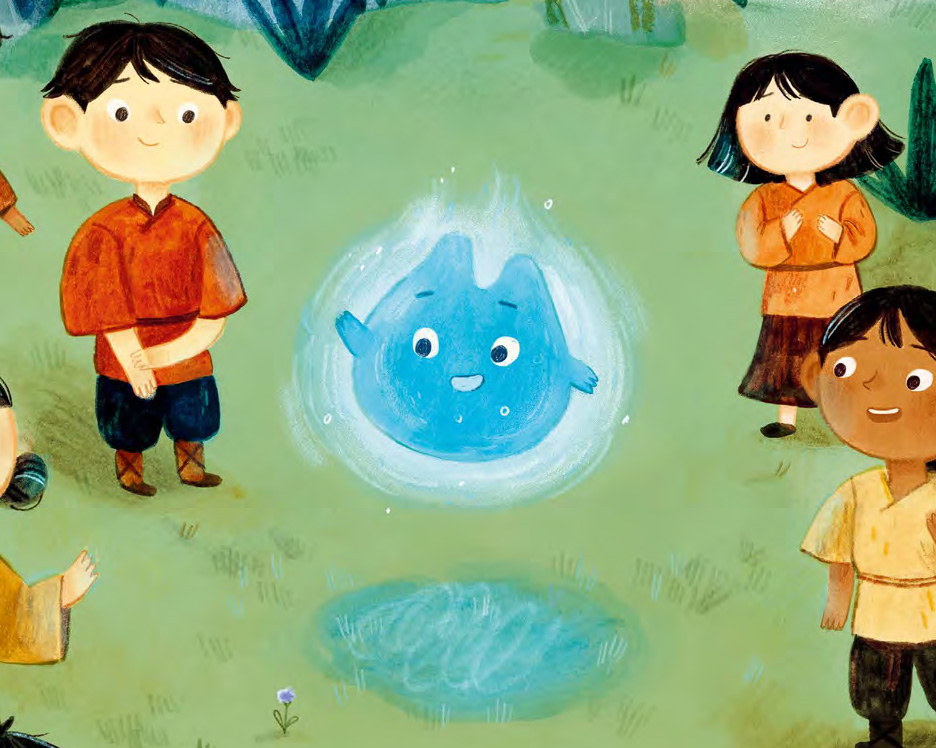
Spirit Light / Will o’ the Wisp / Hitodama
Country of origin: Many cultures around the world, but the book’s character is inspired by the spirit flame and ghost light in East Asian cultures.
Distinctive features: Little blue lights that glow in the night. They also look like small fireballs.
Origin story: The concept of Spirit Lights are found in different cultures around the world. They appear as Will o’ the Wisps in Europe and in East Asian cultures as spirit flames or ghost lights. They are mysterious floating blue lights often seen near graveyards, forests and bodies of water. They can usually be seen after rainfall and when the sun has set. They are said to contain souls.
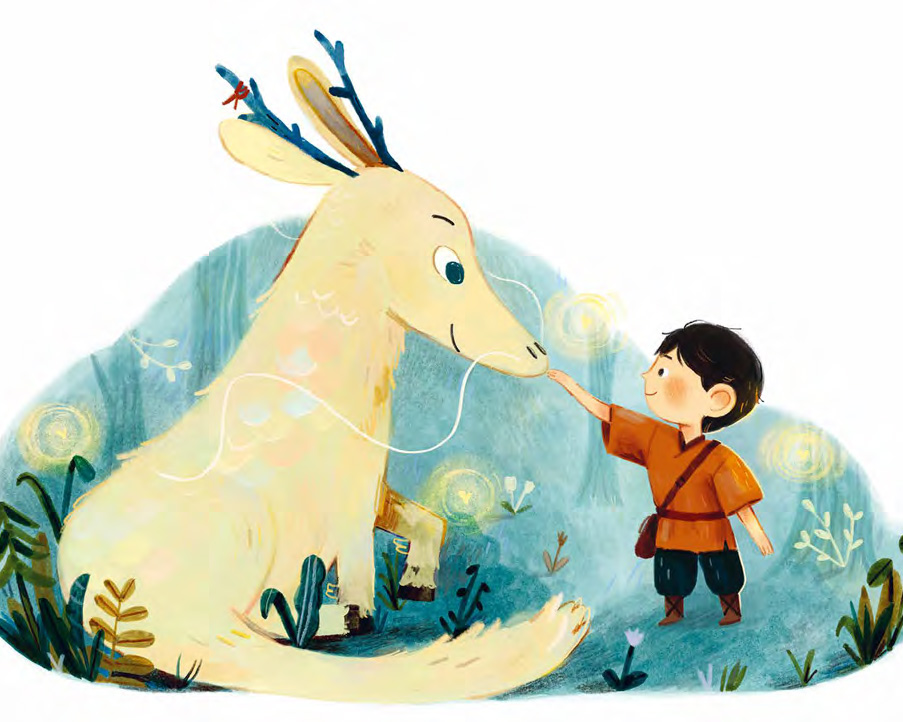
Qilin
Country of origin: China (also found in other East/South-East Asian cultures)
Distinctive features: Hoofed creature with antlers or sometimes a horn, and fur that flows behind it. Their bodies are covered in scales like a fish that sparkles and shines. They appear in many different colours and give off a jewel-like brilliance.
Origin story: Qilin are important mythological creatures in Chinese folklore. They also show up in other East Asian mythologies. They symbolise goodwill, benevolence, gentleness, and integrity. They are gentle creatures and known to be extremely kind towards any other living being. It’s said that they are so gentle that they avoid stepping on even grass or insects. They’re known to be able to walk on top of water to avoid harming other living creatures.
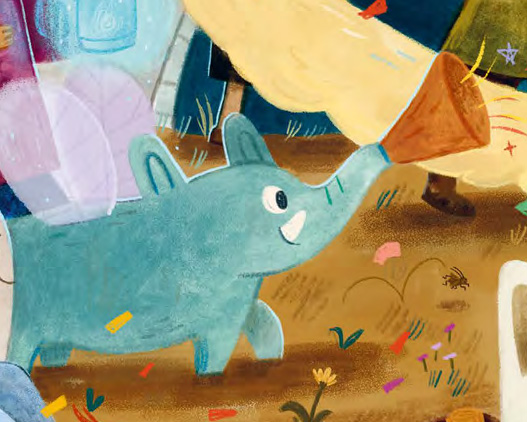
Baku
Country of origin: Japan/China
Distinctive features: The name refers to both the mythical creature and the real-life Malayan tapir. They are composed of different animals’ features: the trunk and tusks of an elephant, the body of a bear, and the tail of a cow.
Origin story: They’re a mythical creature in Japanese folklore that has roots in China. They are said to be able to eat nightmares. Legends say that children who wake up from nightmares can summon the Baku by calling out three times for it. Baku are seen as symbols of good luck and protection.
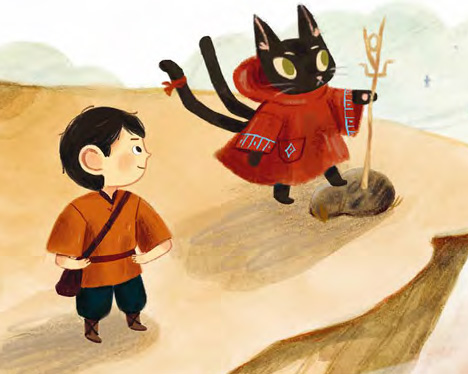
Bakeneko / Nekomata
Country of origin: Japan
Distinctive features: Bakeneko and Nekomata are both similar types of cat spirits. However, Nekomata have tails that split into two. They are intelligent creatures who can walk on their hind legs and sometimes have magical powers.
Origin story: It is said that pet cats who grow old can transform into these creatures. A telltale sign that a cat is becoming one is by growing a very long tail. It’s believed that the older and wiser a cat gets, the longer its tail grows.
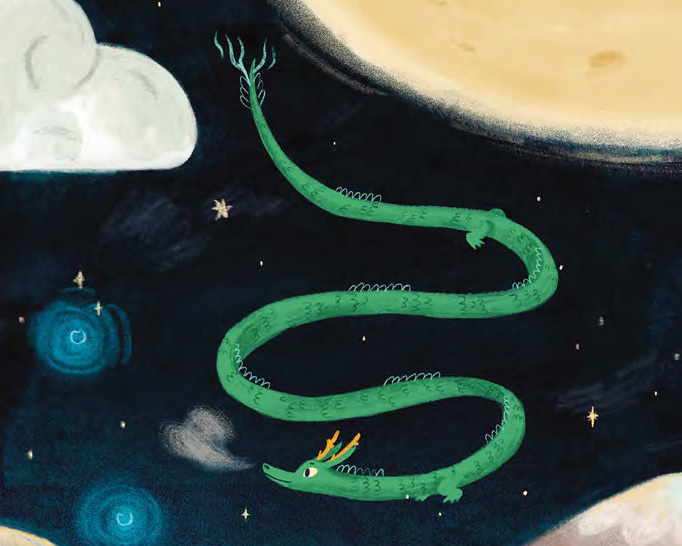
Dragon (‘long’)
Country of origin: China
Distinctive features: They are long and snake-like with four legs and are able to fly without wings. They are said to be rulers of water in its many forms: rain, waterfalls, rivers, and seas. They appear in several colours, with each type representing different values or ideas.
Origin story: The Chinese dragon is a very important legendary creature in Chinese culture. They symbolise power, strength, good luck, and have a high status. Legends say that there are four dragon kings (from the east, south, west, and north seas), each controlling a sea of China, with the Azure Dragon ruling over the east.
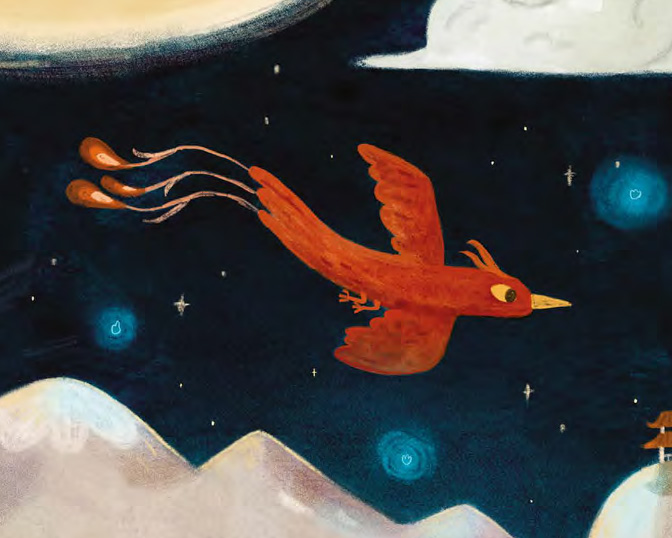
Fenghuang
Country of origin: China
Distinctive features: It is believed that Fenghuang’s body symbolises the celestial bodies (the sun, the moon, the wind, the earth, and the planets). The Fenghuang is often confused with the Phoenix from Greek mythology, but while the Fenghuang is also immortal, it does not share many other similarities.
Origin story: The Fenghuang is a mythological bird that is said to bring peace and harmony, ruling over all other birds. It symbolises both feminine and masculine elements and the balance of yin and yang. Paired alongside the Dragon, the Fenghuang is often considered one of the most important mythical creatures in Chinese mythology.
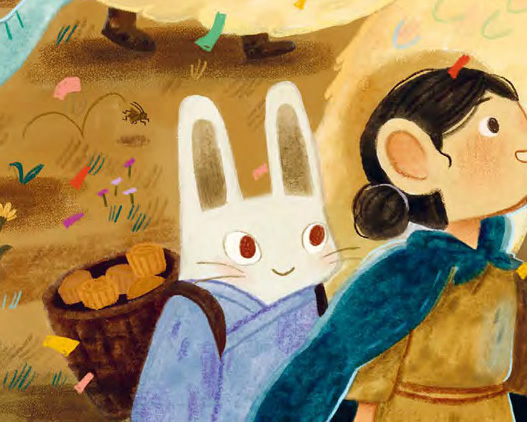
Moon Rabbit / Jade Rabbit
Country of origin: Various Asian cultures
Distinctive features: They’re often depicted as white rabbits who are seen to be making something with a mortar and pestle. In Chinese and Vietnamese folklore, the rabbit makes the elixir of life, medicine, or sometimes mooncakes, and in Japanese and Korean folklore, the rabbit makes mochi (or other types of rice cakes). The Moon Rabbit lives on the moon, and its shape can even be seen on the moon’s surface.
Origin story: The Moon Rabbit legend is a popular part of folklore in many Asian cultures. In Chinese culture, the rabbit keeps the Moon Goddess, Chang’e, company. The legend of Chang’e is often told as the origin story to the Mid-Autumn/Mooncake Festival. The festival is tied to the time of year when the moon is at its brightest, so people host moon-viewing parties and eat mooncakes while drinking tea.
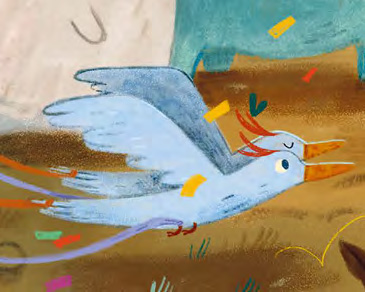
Jian
Country of origin: China
Distinctive features: The Jian is a bird creature that only has one wing and one eye and therefore cannot fly. In order to fly and flourish, they must work together with another Jian.
Origin story: Two Jian birds, are called ‘Jian Jian’, or “birds that fly together”. Because of their connection, they’ve come to symbolise companionship, love, and teamwork.
Free Colouring Sheet
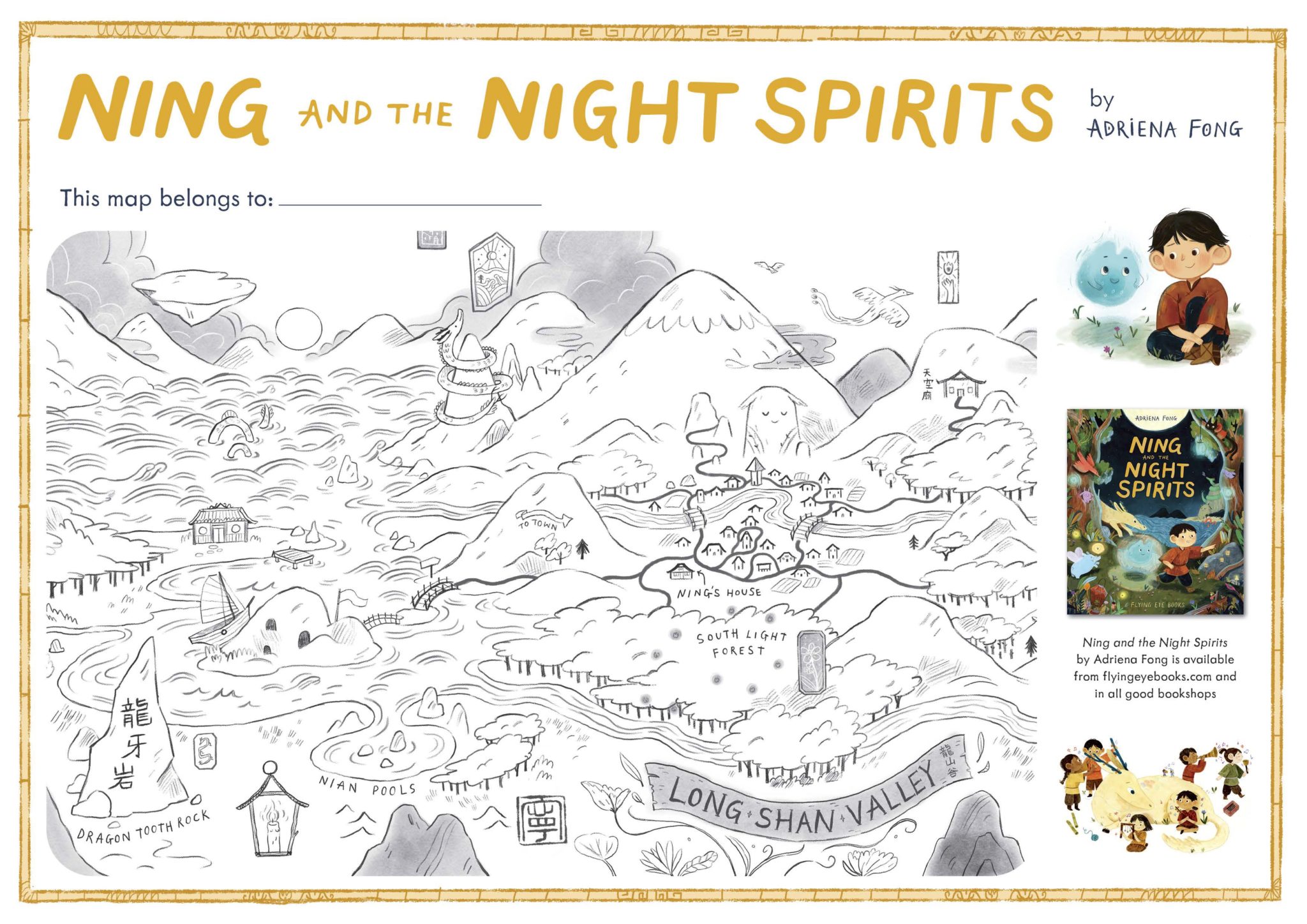
Let your creativity run wild with this free colouring sheet of Long Shan Valley! Tag us on social media at @flyingeyebooks and we’ll share your work of art with other readers.
Ning and the Night Spirits
Written and illustrated by Adriena Fong
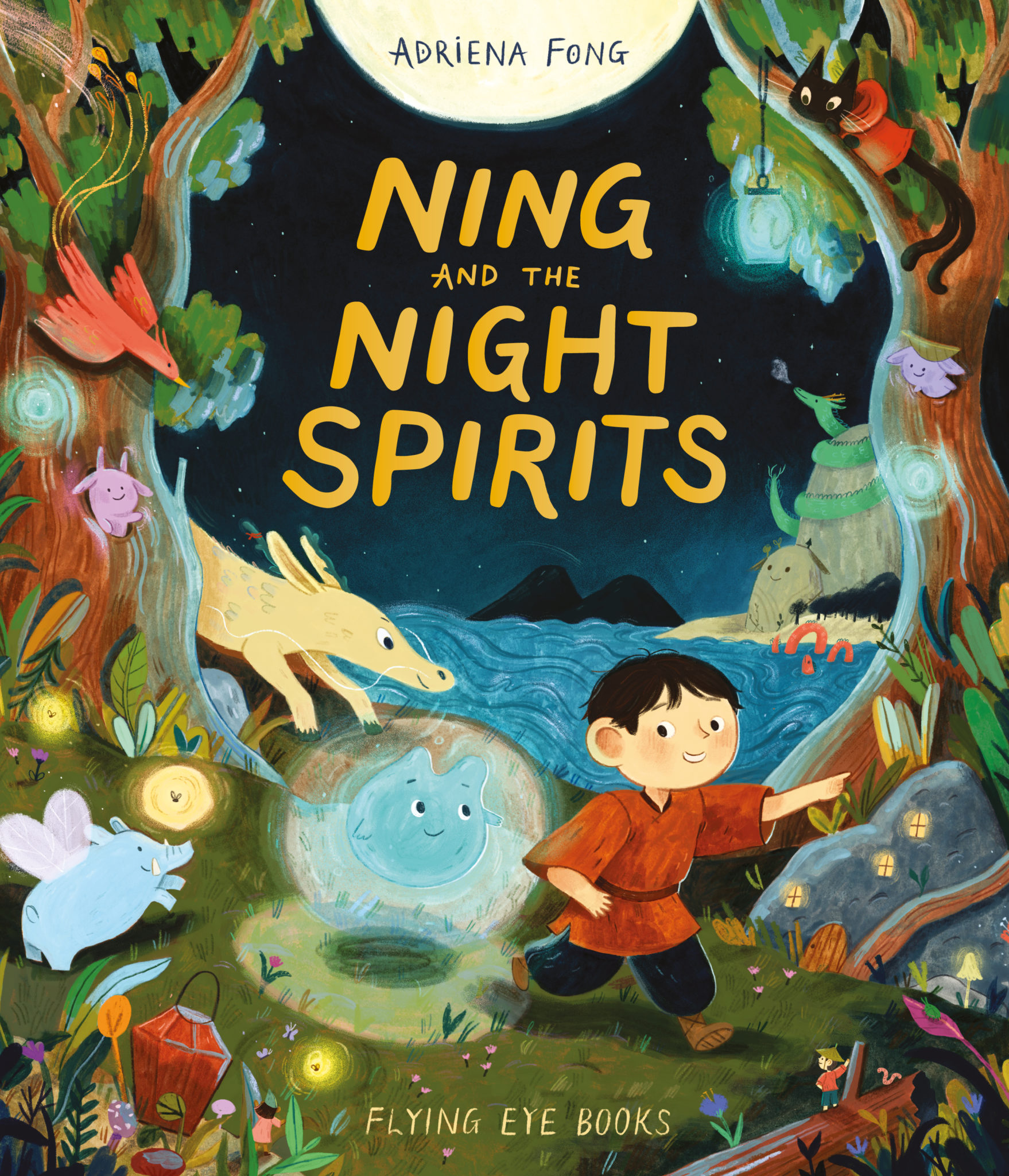
Ning has always heard tales of the night spirits that used to terrorise the little village where he lives. So, each night, he helps his parents light bright orange lanterns to frighten them away. Secretly, he wonders if they’re really as bad as everyone says – but is much too shy to ask anyone. But when Ning finds himself in the forest by night, he meets a creature who introduces him to the spirits’ secret world and he discovers that all is not as it seems…A beautiful and magical story about confronting fears, confidence and a little boy who finds his voice.